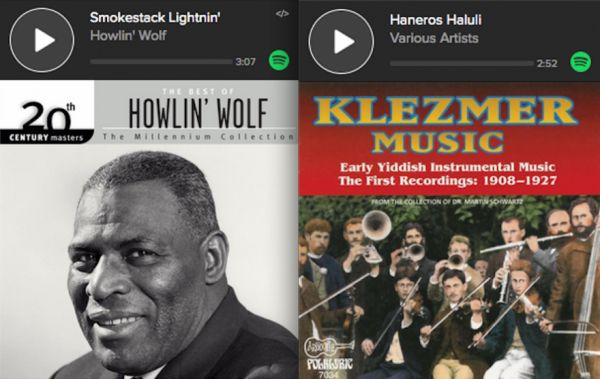
Recording
artist and music professor Mike Errico delves into what "the blues"
are. The term is culturally loaded, and yet traces it roots from all
over. We know the term "Rhythm & Blues," but it was coined as a
replacement for "race music," not as a definitive description of black
music. The blues can also be heard in a cowboy’s harmonica, the tortured
country songs of Patsy Cline, and in the Klezmer tunes of European
Jews. To lay the foundation, Errico starts with the nuts-and-bolts of
music by explaining notes and scales.
To me, blue
notes exist in the cracks between these scale tones. To stretch the
“house” metaphor, they are the notes that sulk under the staircase, sit
on the roof all night, and compulsively check under the bed for
monsters. You know these notes intuitively, not because you know the
scales, necessarily, but because you’re human: You grew up in this
house, and you know how it feels. These are the notes that give music an
ache, an empathy, and the kind of grind that makes you scrunch up your
face, draw up your shoulders and stretch your open hands skyward. I’m
sure you know the feeling. If not, we may have to check your pulse.
How
does that happen? Again, bringing it back to the scale tones, it
happens by playing something that exists slightly outside the lines
drawn by whatever scale you happen to be in. Warning: Being outside
those lines does not mean that everything is blue and achy and humanly
beautiful — some of it is God-awful, out of tune, and face-scrunching in
the GAH, how long has this milk been in the fridge!? sense of the term.
Using
our 12-tone approach, “blue notes” are most commonly a lowered third,
fifth, or seventh. In some cases, they’re technically “wrong,” in that
they don’t belong in a given scale, but even so, musicians know that any
sound can work with any framework, if it’s handled right.
Handling
that framework right takes not only talent, but authenticity.
Ultimately, singing the blues is a very personal way of communicating.
Read
an excerpt of Errico’s class lecture on the blues (with examples) at Observer.
 Recording
artist and music professor Mike Errico delves into what "the blues"
are. The term is culturally loaded, and yet traces it roots from all
over. We know the term "Rhythm & Blues," but it was coined as a
replacement for "race music," not as a definitive description of black
music. The blues can also be heard in a cowboy’s harmonica, the tortured
country songs of Patsy Cline, and in the Klezmer tunes of European
Jews. To lay the foundation, Errico starts with the nuts-and-bolts of
music by explaining notes and scales.
Recording
artist and music professor Mike Errico delves into what "the blues"
are. The term is culturally loaded, and yet traces it roots from all
over. We know the term "Rhythm & Blues," but it was coined as a
replacement for "race music," not as a definitive description of black
music. The blues can also be heard in a cowboy’s harmonica, the tortured
country songs of Patsy Cline, and in the Klezmer tunes of European
Jews. To lay the foundation, Errico starts with the nuts-and-bolts of
music by explaining notes and scales.
No comments:
Post a Comment